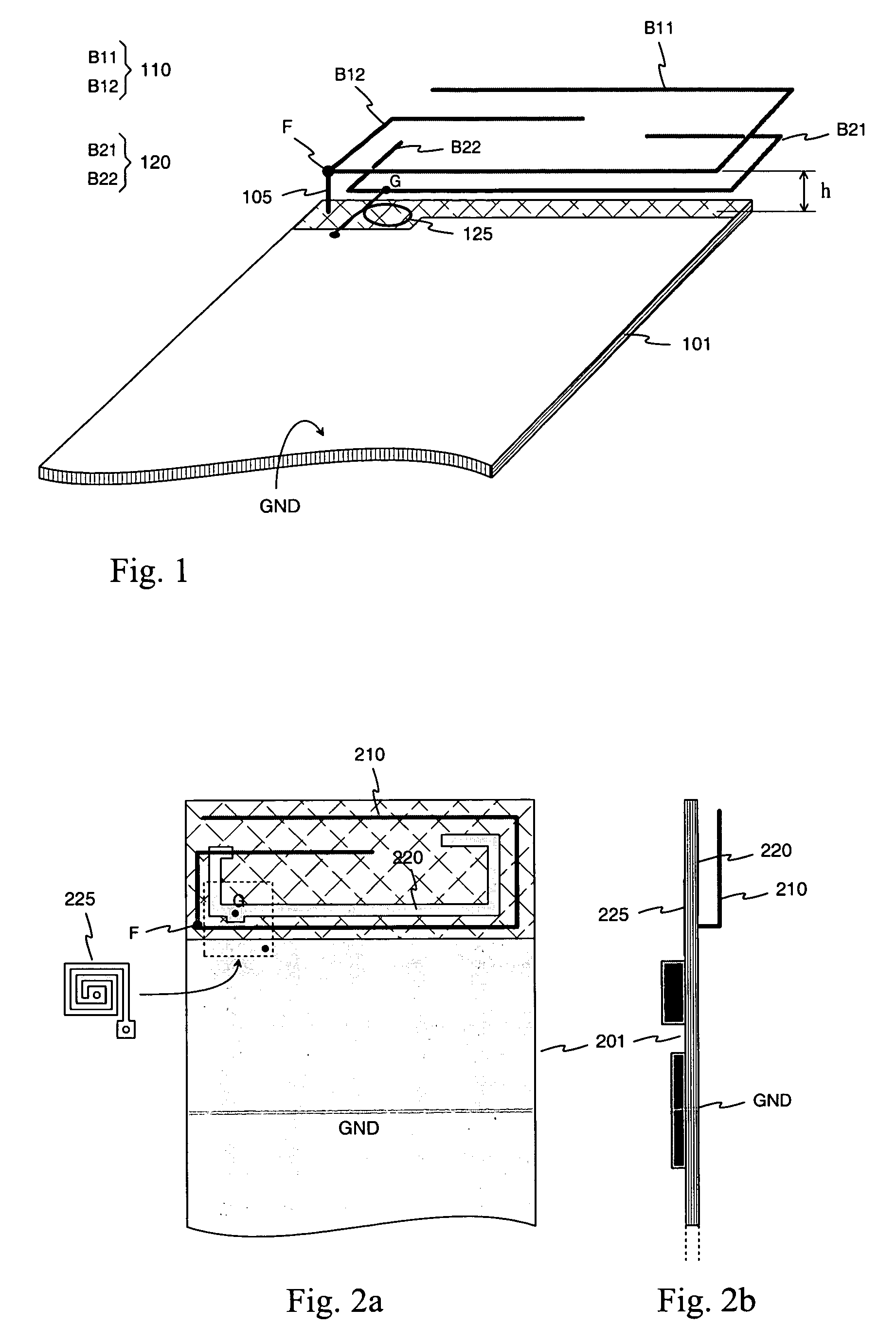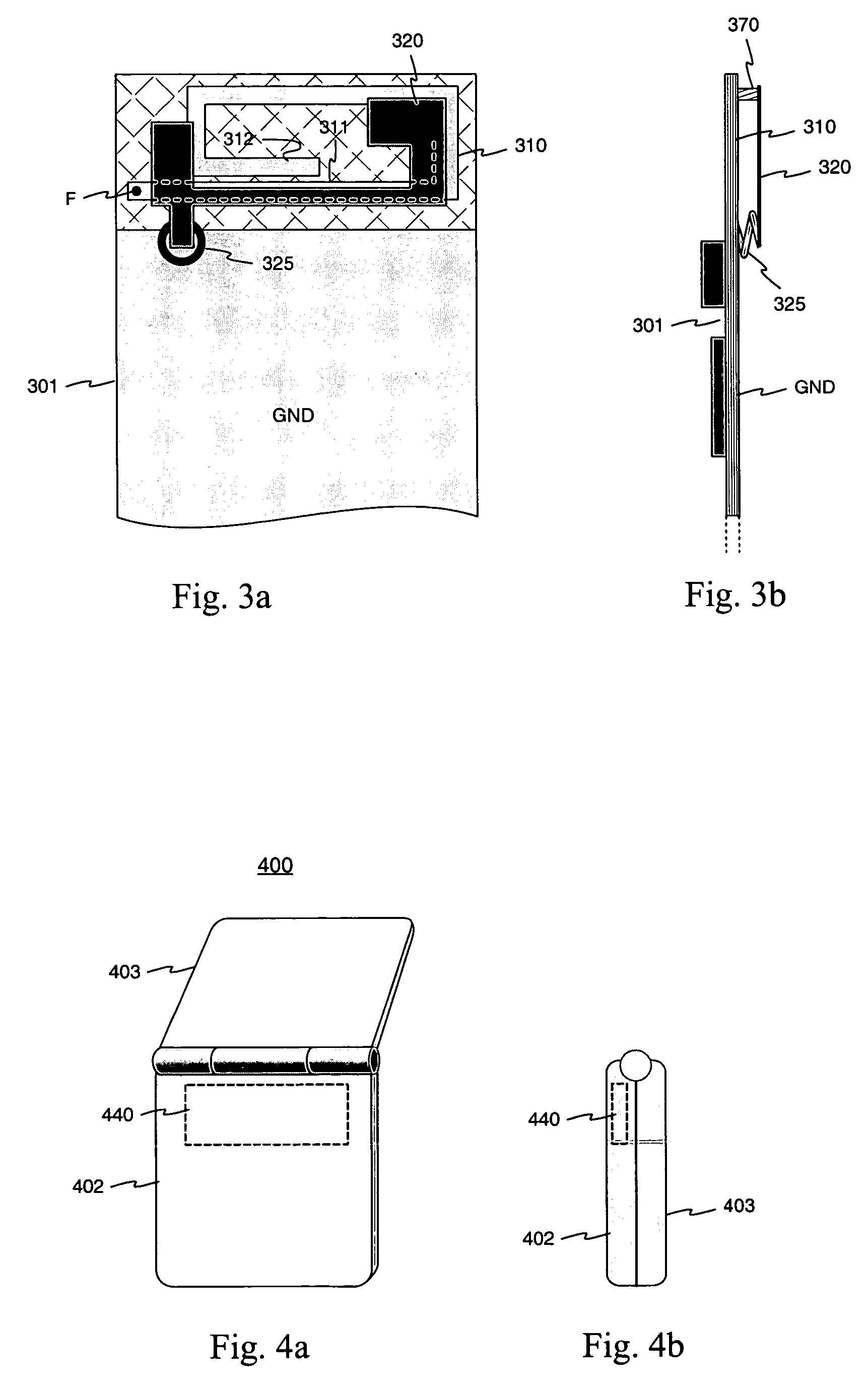Antenna for flat radio device
a radio device and antenna technology, applied in the structure of elongated active elements, resonant antennas, radiating elements, etc., can solve the problems of inconvenient general association with protruding structural elements, inability to meet the antenna gain, and small distance between radiating parts and ground planes
- Summary
- Abstract
- Description
- Claims
- Application Information
AI Technical Summary
Benefits of technology
Problems solved by technology
Method used
Image
Examples
Embodiment Construction
[0016]FIG. 1 shows a first example of an antenna according to the invention. Shown is a radio device circuit board 101 to one end of which an antenna is connected. The main components of the antenna are a base element 110 and parasitic element 120. In this example the base element is a rigid conductive wire resembling an open rectangular ring. In a corner of the base element 110, situating on the circuit board 101 side, there is a feed point F which is connected to the antenna port of the radio device through a feed conductor 105. The antenna port and the transmitter and receiver of the radio device are located on the opposite side of the circuit board 101 and are not visible in FIG. 1. The upper surface of the circuit board is mostly conductive signal ground GND. This, however, does not extend to the antenna, so the base element 110 together with the feed conductor 105 constitute a monopole-type radiator. In this example the monopole radiator has got two bands. Its fundamental reso...
PUM
 Login to View More
Login to View More Abstract
Description
Claims
Application Information
 Login to View More
Login to View More - R&D
- Intellectual Property
- Life Sciences
- Materials
- Tech Scout
- Unparalleled Data Quality
- Higher Quality Content
- 60% Fewer Hallucinations
Browse by: Latest US Patents, China's latest patents, Technical Efficacy Thesaurus, Application Domain, Technology Topic, Popular Technical Reports.
© 2025 PatSnap. All rights reserved.Legal|Privacy policy|Modern Slavery Act Transparency Statement|Sitemap|About US| Contact US: help@patsnap.com



